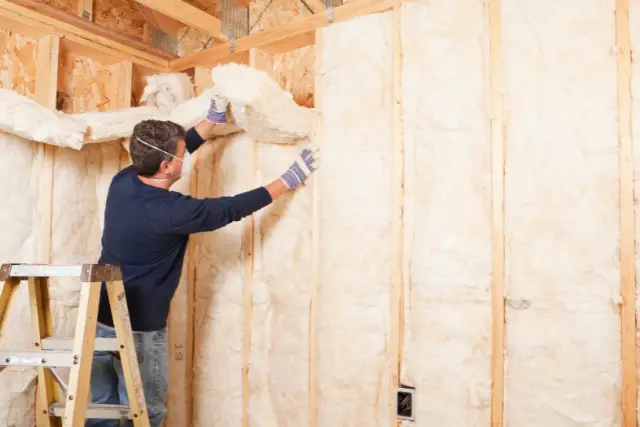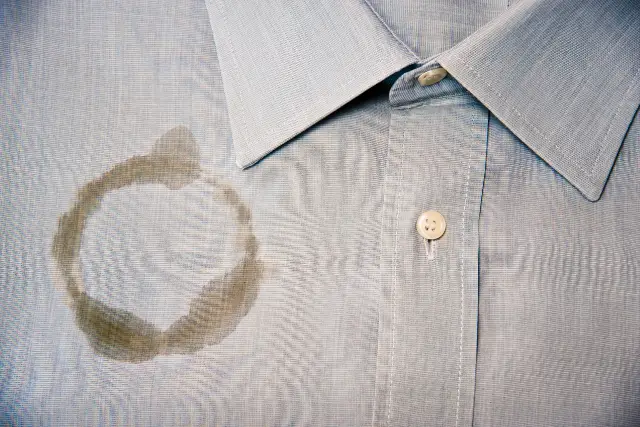If you’ve ever handled insulation or been in a workshop, you may have found pesky fiberglass strands embedded in your clothing. These tiny fibers can be a health hazard as they irritate the skin and, if inhaled, can impair your respiratory system.
Knowing how to get fiberglass out of clothes effectively is crucial to your health and comfort. Employing the right techniques can ensure that your garments are safe to wear again without the risk of irritation or harm.
Key Takeaways
- Properly removing fiberglass from clothing is essential to prevent skin irritation.
- Washing garments correctly can eliminate fibers and minimize health risks.
- Ongoing maintenance and preventive steps ensure future clothing safety.
Identifying Fiberglass in Clothing

When you suspect your clothing may have been contaminated with fiberglass, it’s crucial to identify and handle the material properly to prevent skin irritation or respiratory issues.
Safety Procedures for Handling Fiberglass
Before inspecting your clothing for fiberglass contamination, you should equip yourself with appropriate safety gear to prevent any health risks.
Wear a protective suit that covers your body completely to avoid skin contact with glass dust. Donning safety goggles is essential to protect your eyes, and using latex gloves will safeguard your hands from tiny, irritating fibers.
Characteristics of Fiberglass Contaminated Fabric
Fiberglass is a man-made composite material typically composed of fine glass fibers. These glass fibers can become embedded in the fabric, creating a distinctive texture:
- Feel: The fabric may feel stiff, scratchy, or itchy compared to its normal texture.
- Appearance: You may notice shiny, silvery strands or a powdery residue on the fabric surface.
Visual Inspection:
- Use bright lighting to examine the fabric closely.
- Look for any unusual sheen that may indicate the presence of glass fibers.
Physical Interaction:
- If safety measures are in place, gently run your (gloved) hand over the fabric. Fiberglass will typically make fabric stiffer and rough to the touch.
Be aware that breathing in glass dust from contaminated clothing may cause respiratory issues. If fiberglass is suspected, handle the garment carefully and proceed with proper removal methods to ensure your safety.
Preventive Measures Before Washing

Before attempting to wash clothes contaminated with fiberglass, it is crucial to take certain preventive measures to avoid spreading the fibers and to protect yourself.
Protective Gear to Wear
- Gloves: Wear thick gloves to prevent fiberglass splinters from piercing your skin.
- Long-Sleeve Clothing: To protect your skin from irritation, wear long sleeves and pants.
- Goggles: Use goggles to shield your eyes from airborne fibers.
- Mask: A dust mask or respirator can prevent inhalation of the fibers.
Initial Steps to Remove Loose Fiberglass
- Shake the Clothes: Take the clothes outside, and vigorously shake them to dislodge any loose fibers. Avoid doing this indoors to prevent the spreading of fibers.
- Use Duct Tape: Press strips of duct tape onto the fabric and peel them off to pick up fibers. Replace the tape as it loses stickiness.
- Brush the Fabric: Gently brush the surface with a soft brush. Perform this action outdoors.
- Precautions with Water:
- Cold Water: If you need to use water initially, opt for cold water as warm water may make the fibers stickier.
- Avoid Petroleum Jelly: Do not apply substances like petroleum jelly before washing because they can further embed the fibers into the fabric.
Effective Washing Procedures

To successfully remove fiberglass from clothing, use specific washing techniques and select the right cleaning agents to protect both the fabric and your skin.
Using the Right Detergent
You should choose a high-efficiency laundry detergent that is designed to break down oils and remove industrial contaminants. Avoid detergents with added fabric softeners as they can adhere to fiberglass, making them difficult to remove.
- Recommended Detergents:
- Enzyme-based detergent: Breaks down fibers and oils.
- Heavy-duty laundry detergent: Formulated for tough stains and residues.
Machine Washing Tips
When using a washing machine, set it to a high-water-level cycle with the temperature to warm water—neither hot nor cold—as extreme temperatures can embed the fibers deeper into the fabric.
Machine Washing Steps:
- Shake out the clothes outdoors to remove loose fibers.
- Place the clothes in the washing machine without overloading.
- Add the appropriate amount of detergent.
- Select a gentle cycle with an extra rinse option if available.
- Once done, opt for an additional rinse cycle without detergent to ensure all fibers are flushed out.
Hand Washing Techniques
If machine washing isn’t feasible, you can opt for hand washing. Use mild soap and warm water to protect your hands while ensuring effective fiber removal.
Hand Washing Steps:
- Don protective gloves to prevent skin irritation.
- Submerge the clothes in a basin of warm water mixed with mild soap.
- Gently agitate the clothes in the water to loosen the fiberglass.
- Rinse the clothes thoroughly, preferably under running water, to wash away all residues.
- Repeat the rinse step with clean water multiple times to ensure no fiberglass remains.
Aftercare and Prevention
After successfully washing your clothes to remove fiberglass, focus on managing any post-wash residue and employing strategies to prevent future contamination.
Dealing with Post-Wash Fiberglass Residue
Even after thorough washing, some fiberglass particles may remain. To address residual fiberglass:
- Inspect your clothes visually and by touch to locate any lingering fibers. Use a magnifying glass if necessary to see the tiny strands.
- When fibers are found, carefully remove them using tweezers. Make sure to dispose of the fibers in a manner that they won’t contaminate other items.
- Wipe down the clothes with a cloth dampened with rubbing alcohol or acetone to break down the fibers, but first test a small, inconspicuous area to ensure these solvents do not damage the fabric.
- Run the clothes through the dryer on low heat with a clean filter to catch any loose fibers; however, if possible, air dry to avoid further agitation of the fibers.
- If you experience skin irritation, such as itching or redness, from residual fibers, gently cleanse the affected area with mild soap and water and apply an over-the-counter hydrocortisone cream if necessary.
Preventing Future Fiberglass Contamination
To minimize the risk of recontamination:
- Opt for loose-fitting, cotton clothes while handling fiberglass, as tight clothing can trap fibers more readily.
- Use a HEPA filter vacuum to clean the work area and any affected clothing items, as this will more effectively capture small particles.
- Be aware of allergy development; if you notice skin reactions, take preventative measures promptly with appropriate protective clothing and equipment.
- Understand that it is best to keep work clothes separate to avoid contaminating everyday wear. After handling fiberglass materials, change out of your work clothes before coming into contact with other garments or furniture.
Frequently Asked Questions

Before diving into the specifics, it’s essential to understand that removing fiberglass from clothing and fabrics is a delicate process that requires attention to detail to ensure your safety and the integrity of the material.
How to remove fiberglass from clothes during machine washing?
When using a washing machine to remove fiberglass from your clothes, use warm water and run a full cycle with heavy-duty laundry detergent. Post-wash, and rinse the clothes twice to ensure all fiberglass particles are cleared. Do not mix these clothes with other laundry to prevent cross-contamination.
What are the methods to extract fiberglass from the skin?
If fiberglass particles have settled on your skin, gently wash the affected area with warm water and mild soap. Avoid rubbing to prevent the fibers from embedding deeper. Use adhesive tape to lightly tap and pull away from the fibers if necessary, and then rinse again.
How can I safely remove fiberglass from blankets?
To safely remove fiberglass from blankets, shake them outdoors to release loose fibers, then wash them alone in a washing machine on a warm cycle with a heavy-duty detergent. Tumble dry on low to avoid damaging the blanket and to shake off any residual particles.
What substances or solutions are effective in dissolving fiberglass from textiles?
No substances or solutions can dissolve fiberglass from textiles due to its resilient nature.
The best approach is mechanical removal, washing with heavy-duty detergent in warm water, and multiple rinse cycles to flush out particles from the fabric.
Avoid using bleach or fabric softeners as they can worsen the problem.



